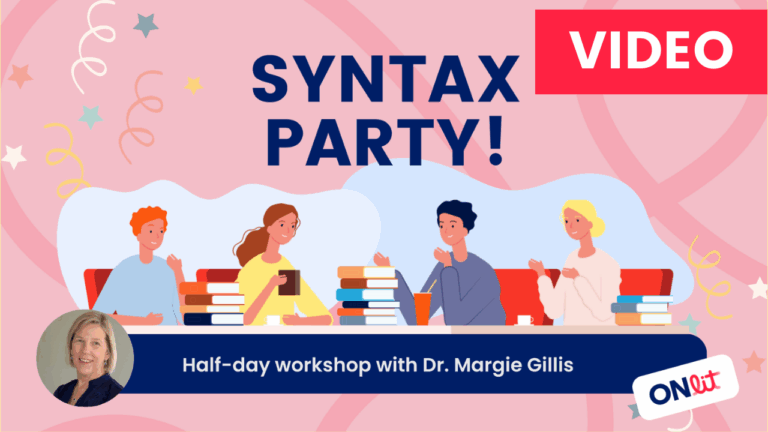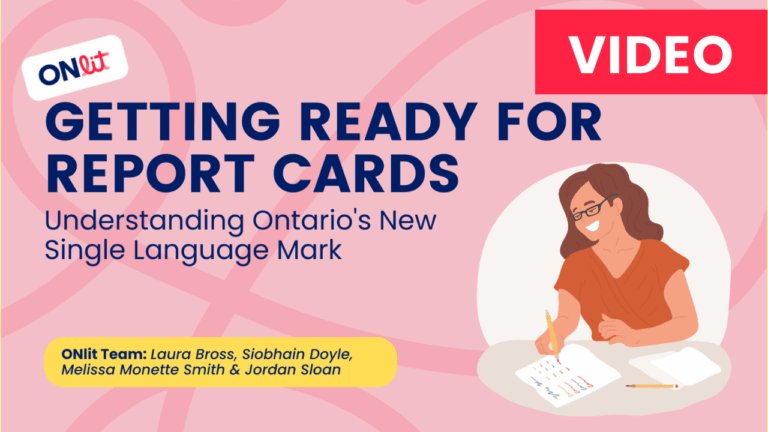Syntax Party Recording
Missed the ONlit Syntax Party with Dr. Margie Gillis? Catch up with the recordings – learn about why syntax is necessary for skilled reading and writing, and how to best teach this important language domain.

Missed the ONlit Syntax Party with Dr. Margie Gillis? Catch up with the recordings – learn about why syntax is necessary for skilled reading and writing, and how to best teach this important language domain.

In this video, Dr. Anita Archer models an explicit vocabulary lesson with older students. Note how Dr. Archer involves active participation: students are engaged throughout. Note also the high level of teacher-student interaction. See if you can count the number of “serve and return” interactions!

In these webinar recordings, Jordan Sloan, Melissa Monette Smith, Siobhain Doyle, and Laura Bross explore assessment, evaluation, and reporting in the context of the revised Language curriculum and the new one-mark report card structure for Ontario students.

Hear the story of dedicated educators working together to put in place a full MTSS framework (Tiers 1-3) to support ALL students. This webinar focuses on a partnership between Mount St. Joseph University and a local school; the main investigator and school administration share their journey.

Watching this webinar from PaTTAN, you will learn why summarizing has been identified through research as highly effective for developing comprehension and writing. It defines a quality summary and how it differs from retelling or paraphrasing. Practical suggestions for explicitly teaching summary writing based on text and non-text sources will be shared, including scaffolds. The…

This video brought to you by Stephanie Stollar will clear up any confusion about universal screening and diagnostic assessment. Not only will you understand the differences, but you will also learn how the two work together to help guide instructional decisions in reading.

See how repeated reading, an evidence-based approach to building fluency, can be implemented in the classroom with this brief video from the Institute of Education Sciences.

These are the key ideas and principles guiding the ONlit team’s work. We hope they might be helpful for you, as well, as we collectively work toward shifting systems to allow all children realize their right to learn to read.

Joan Sedita, founder of Keys to Literacy, explains the two key steps students need to learn in the revision process when writing: thinking critically about what they have written and how they can make improvements and proofreading.

The ultimate goal of writing is communication, says Joan Sedita, founder of Keys to Literacy, who adds that teachers can help students struggling with transcription or spelling by using other strategies like dictation or drawing to help them develop their writing skills.

Joan Sedita, founder of Keys to Literacy, talks about how using “mentor texts” — short pieces of literature students can read and reread for specific learning purposes — can help students become better writers.

Motivating young writers is not always easy, says Joan Sedita, founder of Keys to Literacy, but some strategies include giving students opportunities to work collaboratively, encouraging students to write about topics that are meaningful to them, and teaching students the power of writing to an authentic audience.